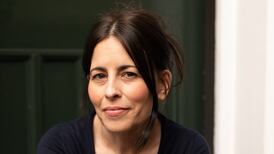Into the Frame: The Four Loves of Ford Madox BrownBy Angela Thirlwell Chatto and Windus, 328pp. £25
NO DOUBT ABOUT it, the Pre-Raphaelites are back. Not that they were ever wholly out of favour, aesthetically at least, but nowadays they are “copy” in the sense that even the most minor Bloomsburyites were 20 years ago. Such a swing in taste has meant, of course, that their love lives have come under close, almost voyeuristic scrutiny, and almost inevitably this has created a mini-industry of its own.
On the face of it, Ford Madox Brown is not the most encouraging subject for such treatment. He was not, to begin with, a member of the Pre-Raphaelite Brotherhood (PRB) though he showed alongside them and was a close friend of many of the group; he even gave the young Rossetti painting lessons. Secondly, his pictures have never quite become household icons in the sense that certain works of Burne-Jones, Millais, Waterhouse, etc, undeniably have done. ( The Last of Englandis an obvious exception, but it hangs in Birmingham instead of the Tate or any other London gallery, and is accordingly unfamiliar to millions today.) And finally, the man himself somehow lacks colour – which is no reflection on his many sterling qualities and his role in events which shaped English art, design and taste for two generations.
Brown’s standing in English painting is anomalous; he cannot be ignored, but neither can he be placed up among the leaders. Much of his work, including the later murals which took up most of his energies, belongs in a “provincial” context and to see it in depth you need to travel to Manchester and Birmingham, among other places. He got most of his training in Belgium, where a lush and rhetorical school of “history” painting flourished, and he never quite shook off his early influences. The result is an occasional masterpiece and a good many overcrowded, overworked canvases which display strenuous high-mindedness rather than genius. In that respect, he closely resembles Holman Hunt. Also, he refused to kowtow to the dogmatic punditry of Ruskin, and his reputation has suffered accordingly.
As for his love life, the subject of this book, it too remains unremarkable. Certainly it contains nothing comparable to the triangular relationship between Rossetti, Morris and his wife Janey, the almost catastrophic affair between Burne-Jones and Maria Zambaco, or Millais's involvement with Effie Ruskin. Brown's first wife, Elizabeth Bromley, seems to have been an admirable woman in every sense, but she died young, of TB – probably the greatest misfortune of his life. His second wife, Emma Hill, was successively his model, mistress and wife and her image duly appears as one of the emigrant couple in The Last of England. She grew into a loyal, supportive partner, going through some very hard times with him, but was rather out of depth in her new milieu, and the Pre-Raphaelites sometimes found her an embarrassment. She was also, alas, a secret tippler, though Brown seemingly treated this fault with indulgence. Their son Oliver, a youthful prodigy, became the white hope of Pre-Raphaelitism; but he too died tragically young, at 19.
Of Brown’s two other loves Maria Spartali, a talented painter in her own right, belonged among the rich and influential Greek colony in London and was something of a femme fatale. Somehow, Angela Thirlwell does not convince me that her relationship with Brown was much more than the kind of cerebral infatuation which a lonely, struggling artist or writer often feels towards a woman who is gifted, intelligent and sympathetic – not to mention physically attractive. As for the fourth of the quartet, Mathilde Blind, it is hard to take his entanglement with her quite as seriously as this book does, though Brown’s two daughters undeniably did so – especially when she took to staying long periods in their father’s house. He was by then an elderly man, with an ailing wife.
Mathilde was an “emancipated” German woman, a poet and passionate feminist in the late-Victorian style, though her humourlessness and self-importance are trying and she was also, in her way, something of a “user”. Brown was much older than she, but in any case she believed that marriage clipped a woman’s wings – as, in the climate of the times, it very often did. And Mathilde herself cannot have been many late-Victorian men’s ideal of femininity. DG Rossetti, for instance, wrote a limerick poking fun at her intense style of poetry-reading:
Do you know that sweet Willi, Miss Blind?
I wouldn’t choose her if I sinned.
Such a storm of Sah-sah!
Of Ho-ho! and Hurrah!
Would be apt to endanger one’s wind.
The liaison, if it ever was really that, inevitably petered out, though Brown’s daughter Lucy still feared that her father, twice a widower, might marry “the handsome Jewess”. It didn’t happen, but Mathilde at least gained a solid literary reputation in England before she virtually retired to Tunbridge Wells, dying of cancer in 1896. By then, Ford Madox Brown was already three years dead.
Angela Thirlwell has done much useful research, and we feel we now know Brown better than before. But her tone is at times too solemn, even when the material calls out for a Beerbohm cartoon, or perhaps Henry James in his cattier mood. Brown, though a good and generous man, was almost comically touchy – Burne-Jones, in old age, called him “that irascible, quarrelsome old Brown”. Both as a man and an artist he is still half in shadow, so perhaps a level-headed, sensitive biography is overdue?
Brian Fallon is an author and an art and literary critic








